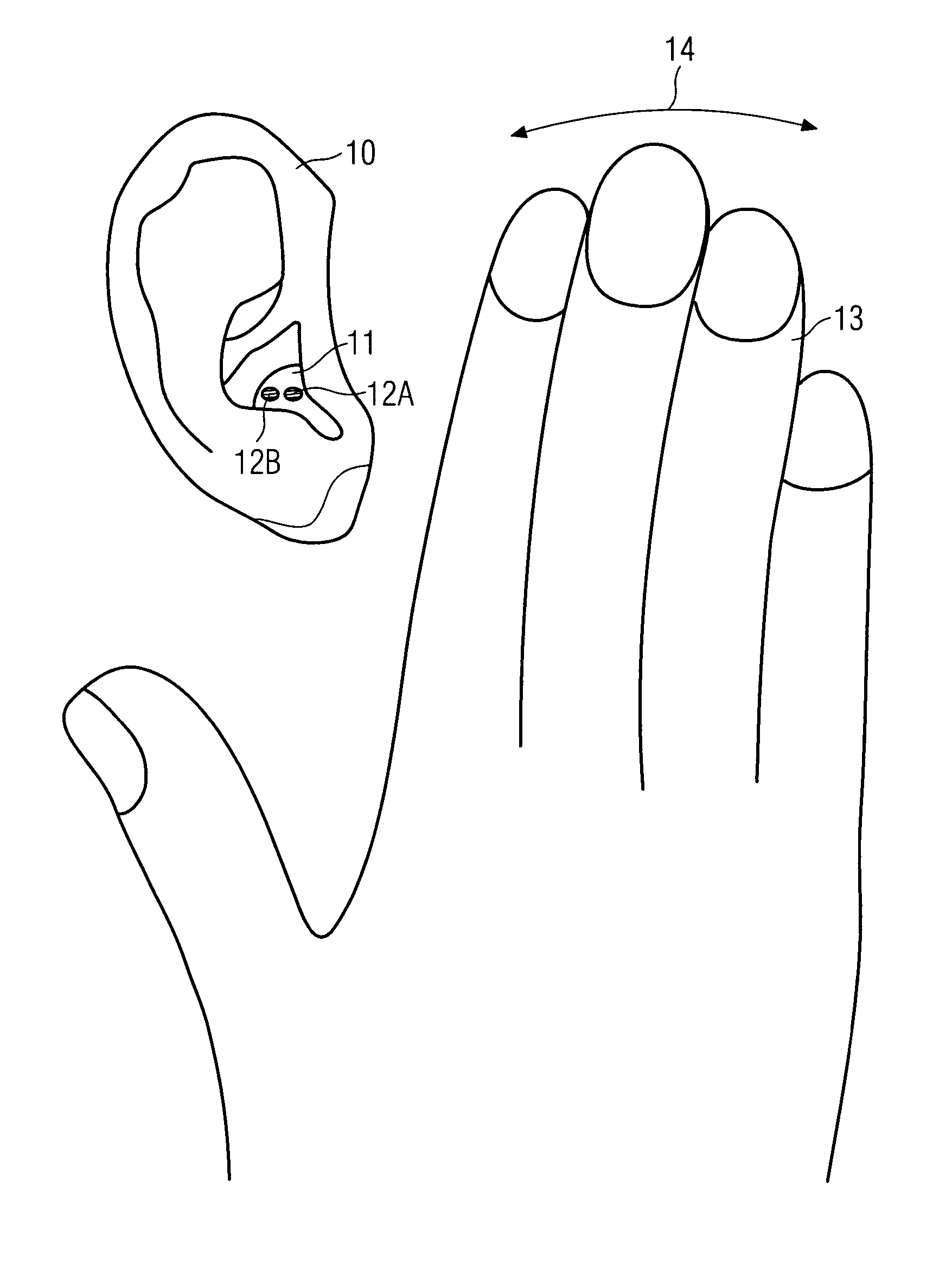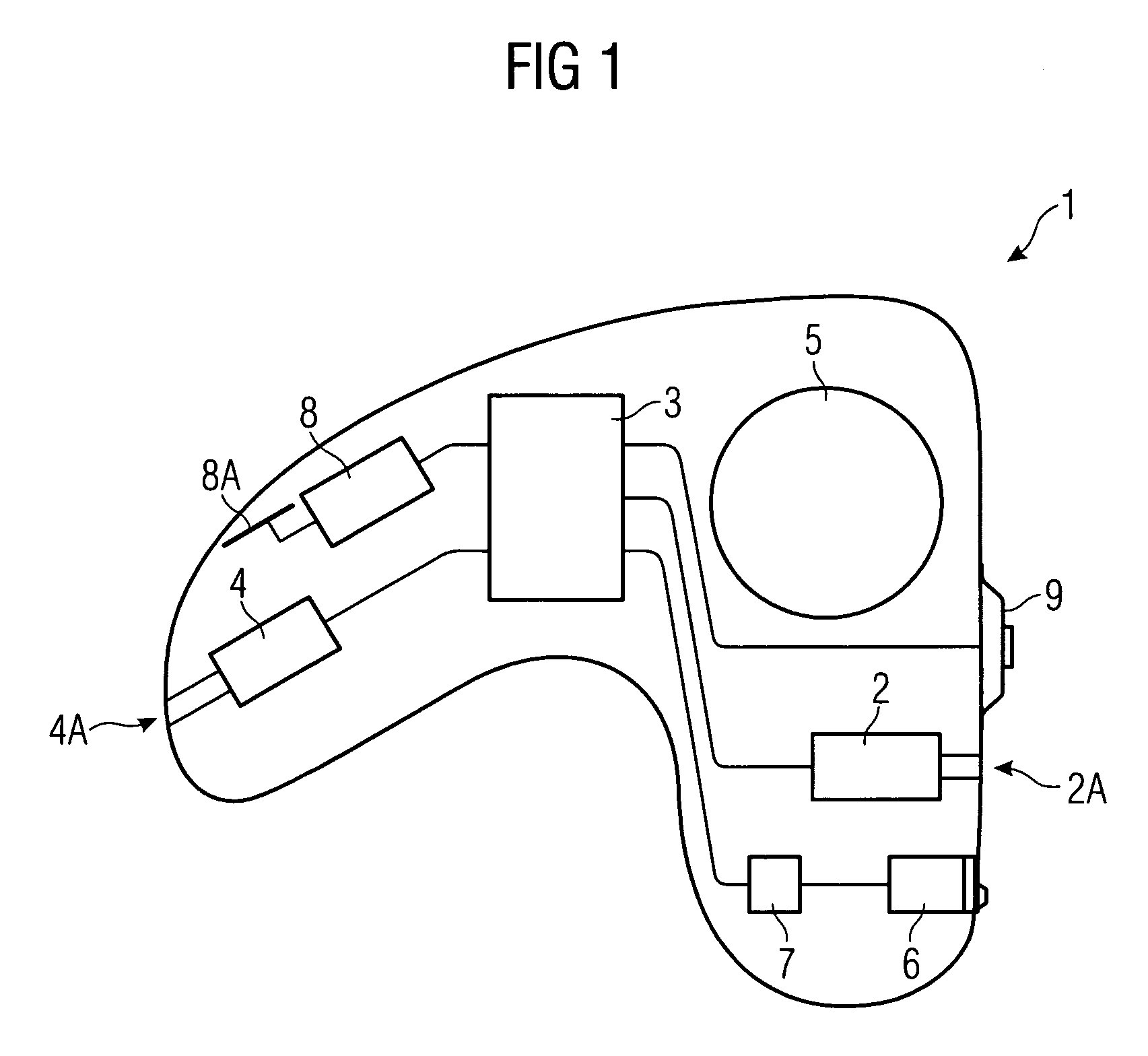Hearing aid
a technology of hearing aids and magnets, applied in the field of hearing aids, can solve the problems of having to be present additional means (magnets), and achieve the effect of avoiding unintentional switching
- Summary
- Abstract
- Description
- Claims
- Application Information
AI Technical Summary
Benefits of technology
Problems solved by technology
Method used
Image
Examples
Embodiment Construction
[0029]FIG. 1 shows an in-ear hearing aid 1 with its main components. These are a microphone 2 with a sound entry opening 2A to accept an acoustic signal and convert it into an electrical signal. The electrical signal is fed to a signal processing unit 3 for further processing and frequency-dependent amplification. Finally the signal which can be further processed and amplified is converted back by means of an earpiece 4 from an electrical signal into an acoustic signal and output via the sound channel 4A into the auditory canal of a hearing aid wearer. A battery 5 is used to supply power to the electrical components of the hearing aid 1.
[0030]The transmission characteristics of the hearing aid 1 in accordance with the exemplary embodiment can be adapted to different hearing situations (e.g. “quiet environment”, “conversation”, “conversation in a noisy environment “traveling in a car” etc.). The selection is made by setting specific sets of parameters (hearing programs), which match ...
PUM
| Property | Measurement | Unit |
|---|---|---|
| distance | aaaaa | aaaaa |
| distance | aaaaa | aaaaa |
| distance | aaaaa | aaaaa |
Abstract
Description
Claims
Application Information
 Login to View More
Login to View More - R&D
- Intellectual Property
- Life Sciences
- Materials
- Tech Scout
- Unparalleled Data Quality
- Higher Quality Content
- 60% Fewer Hallucinations
Browse by: Latest US Patents, China's latest patents, Technical Efficacy Thesaurus, Application Domain, Technology Topic, Popular Technical Reports.
© 2025 PatSnap. All rights reserved.Legal|Privacy policy|Modern Slavery Act Transparency Statement|Sitemap|About US| Contact US: help@patsnap.com



